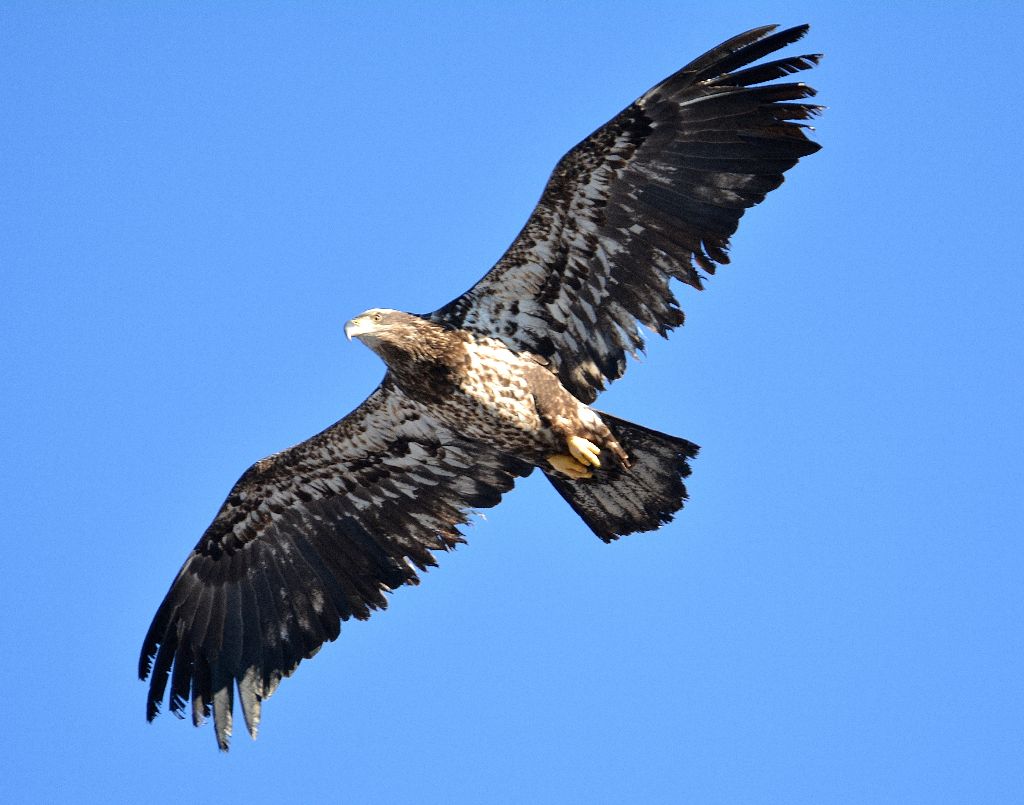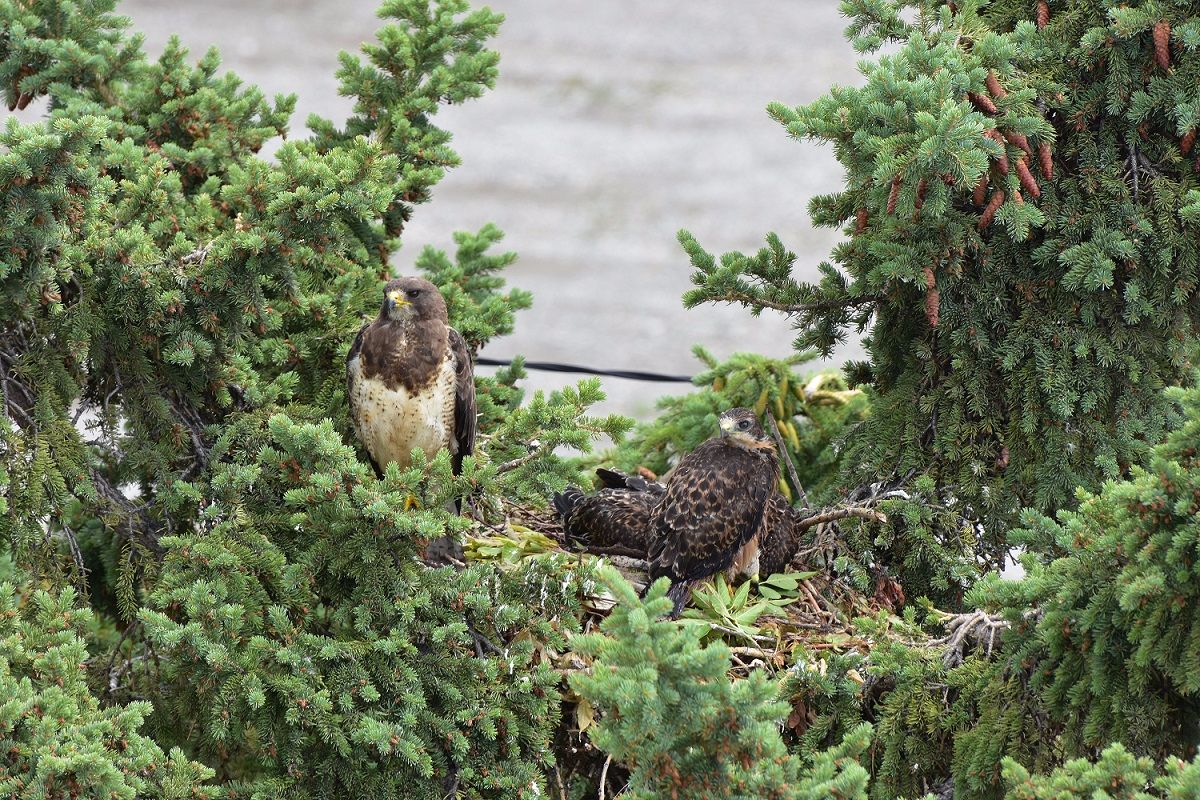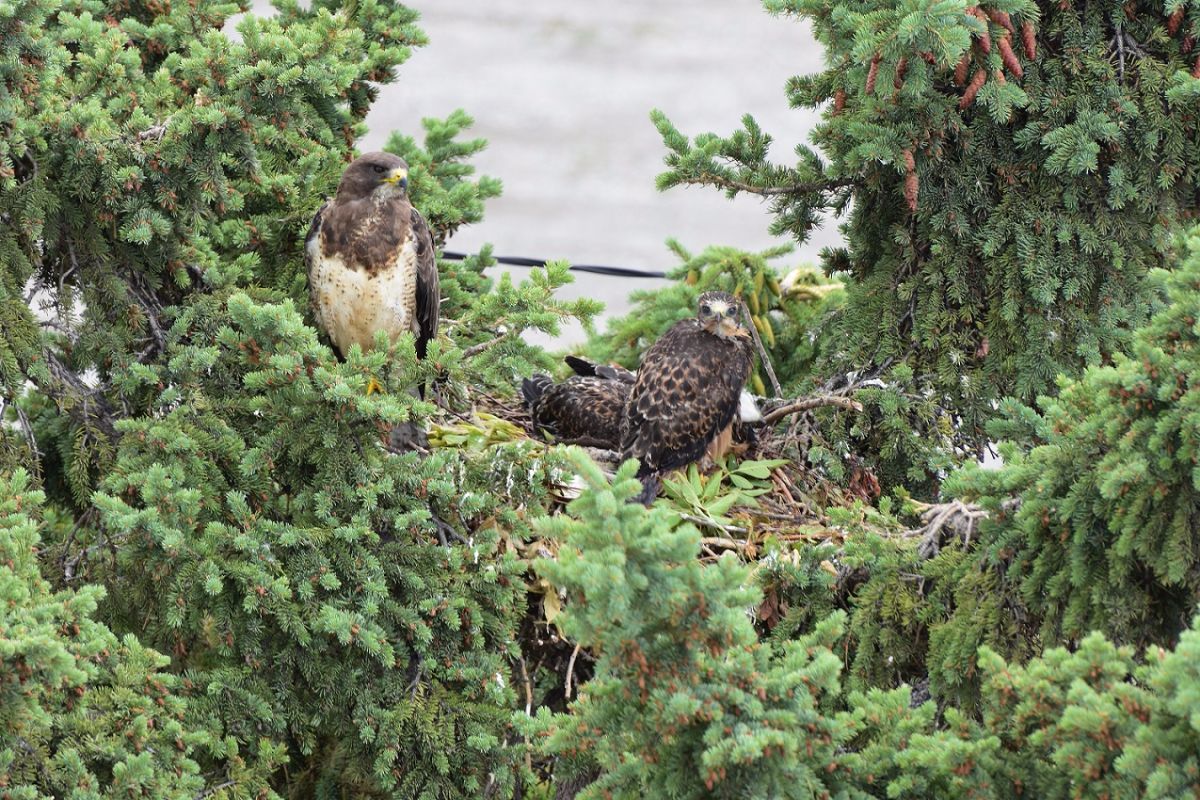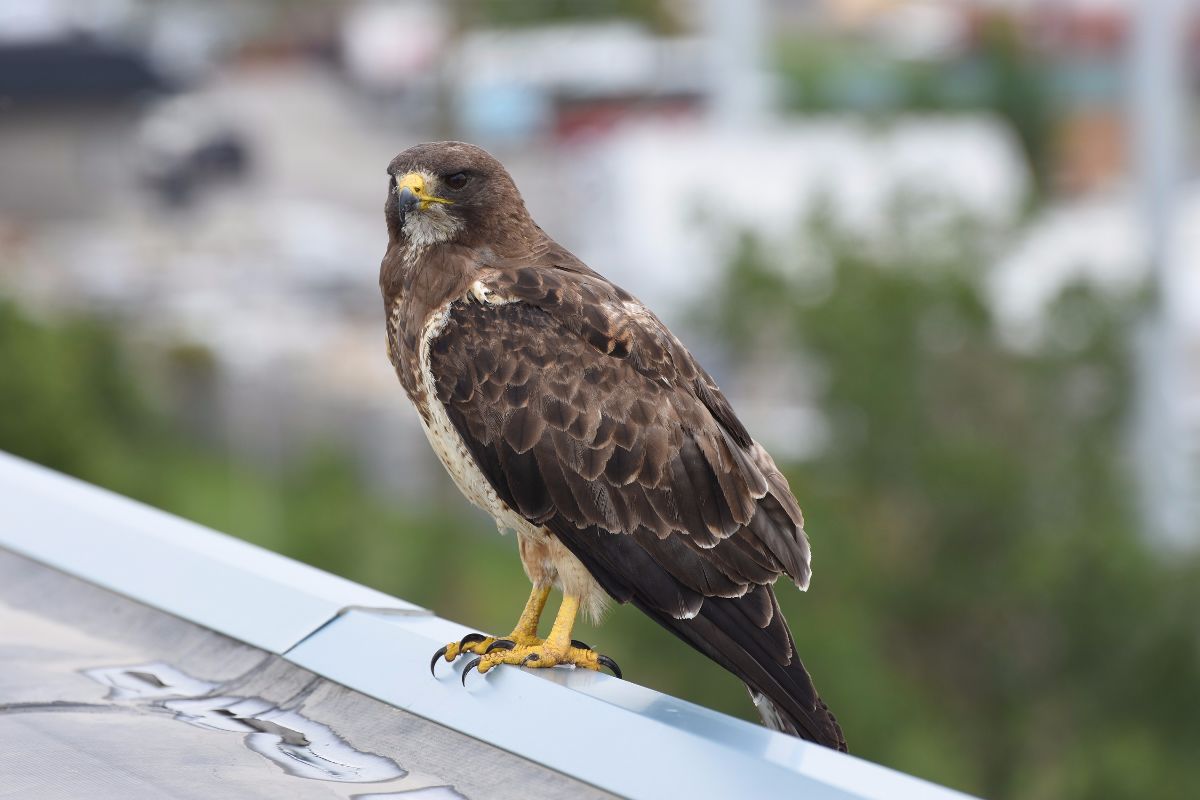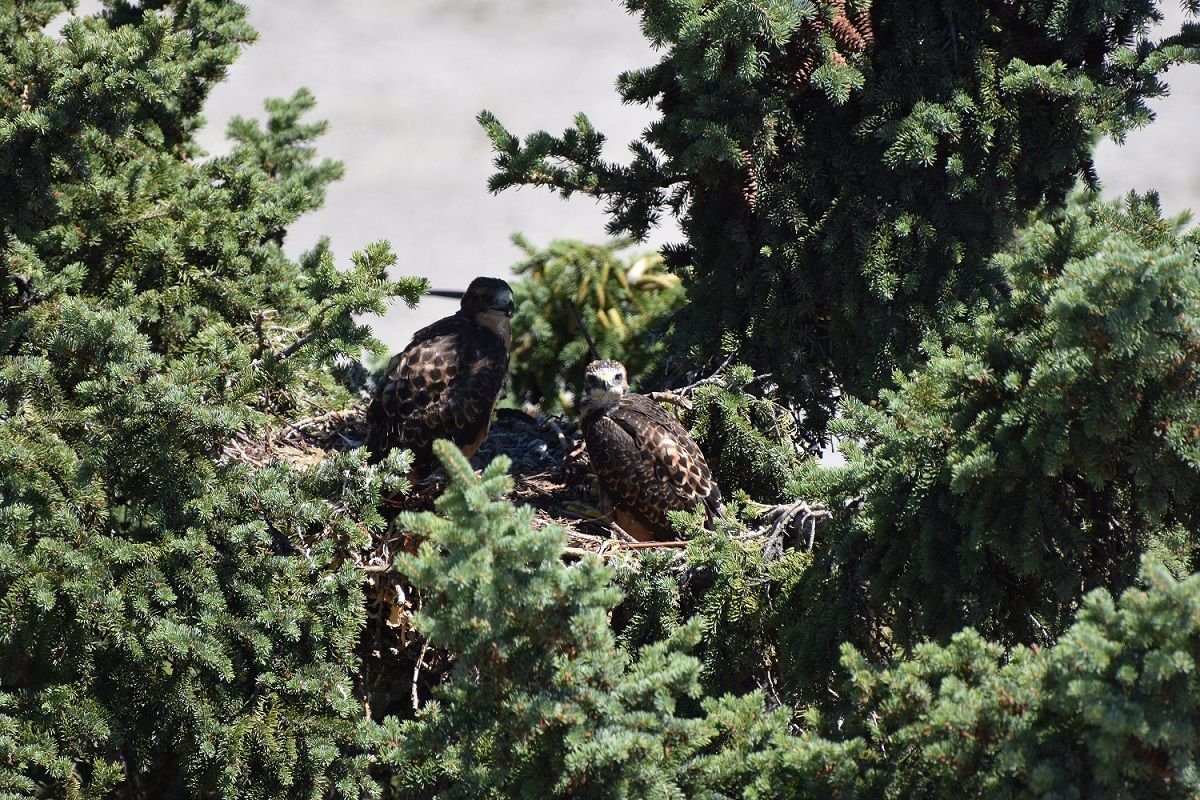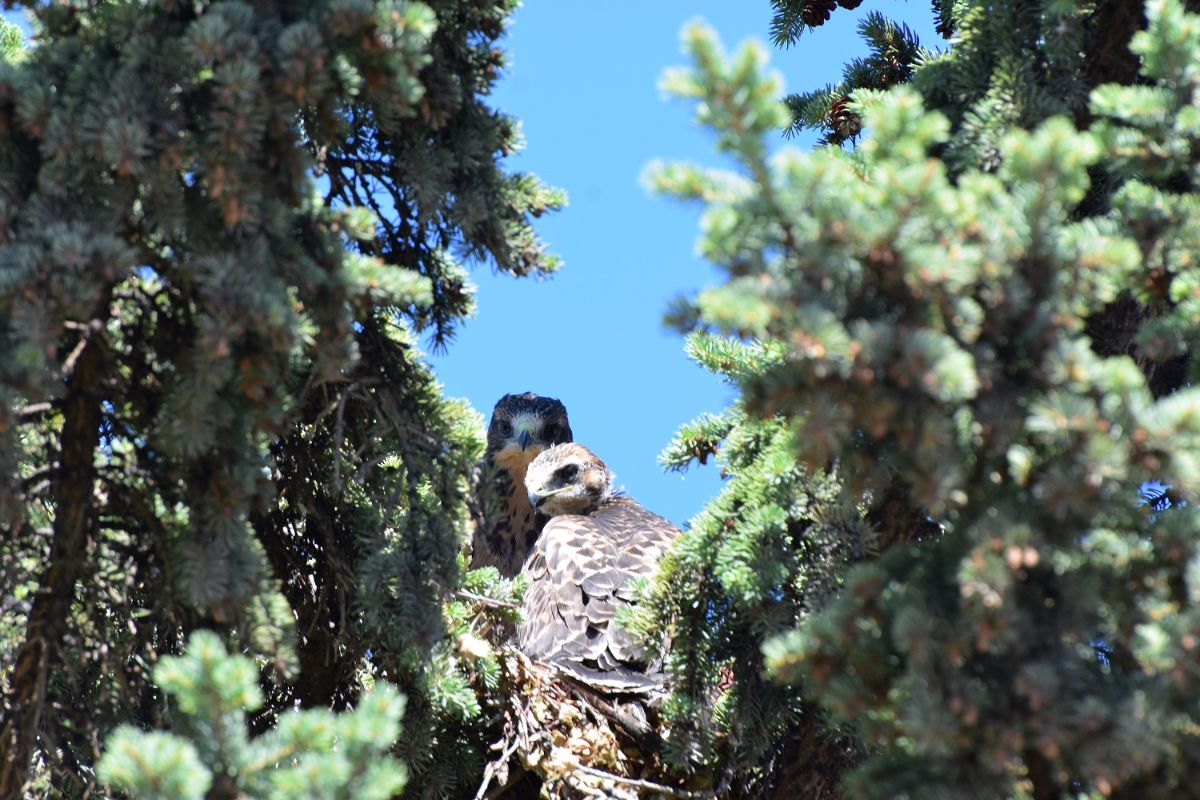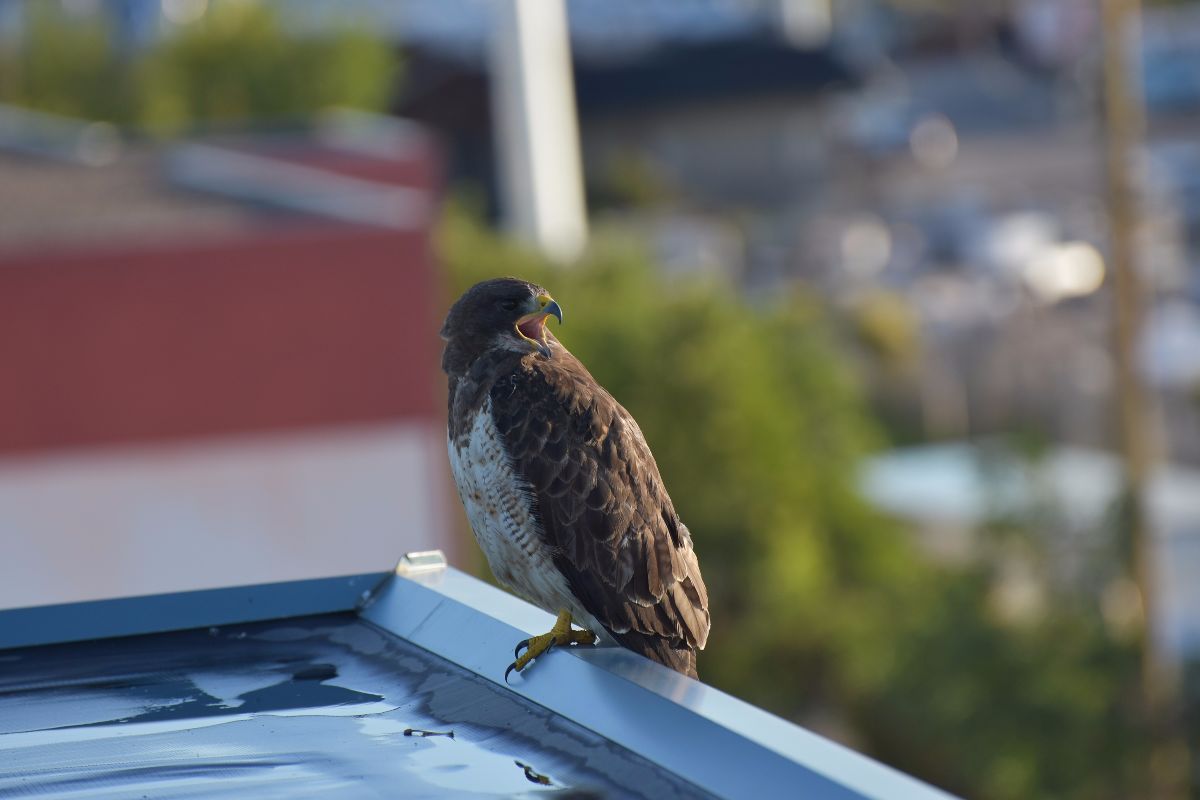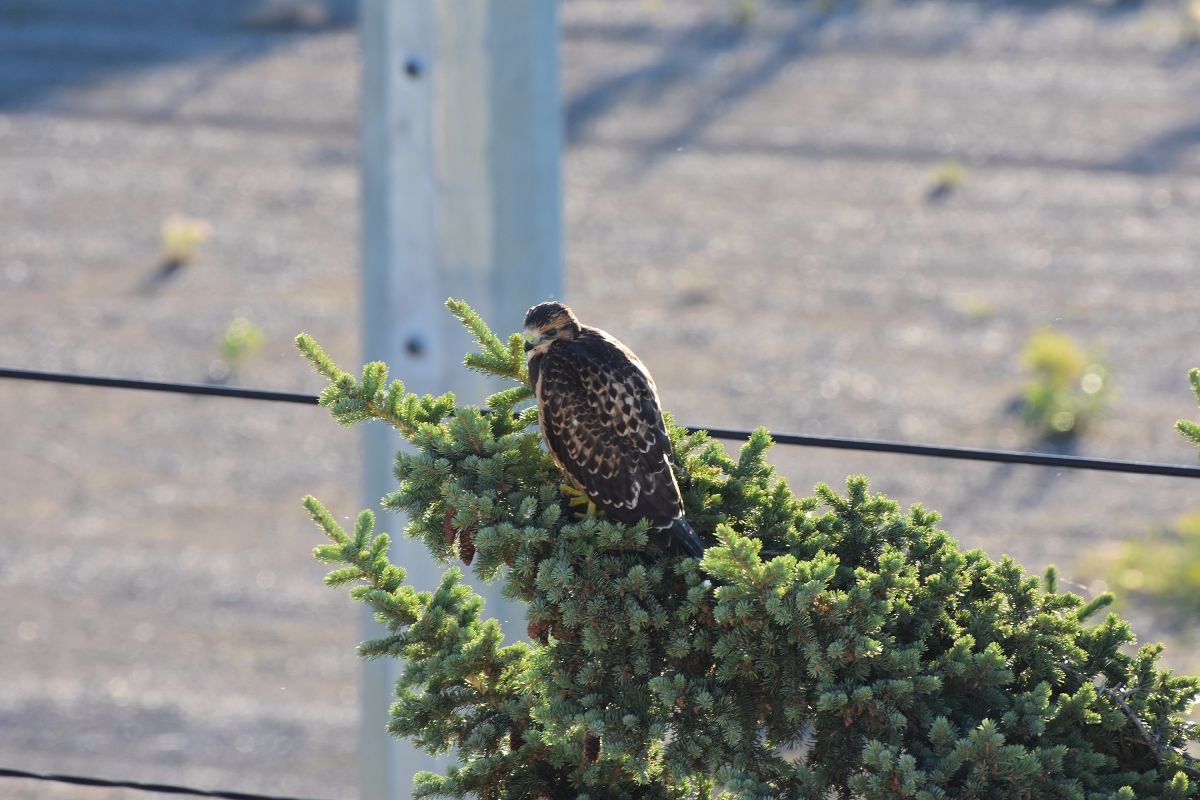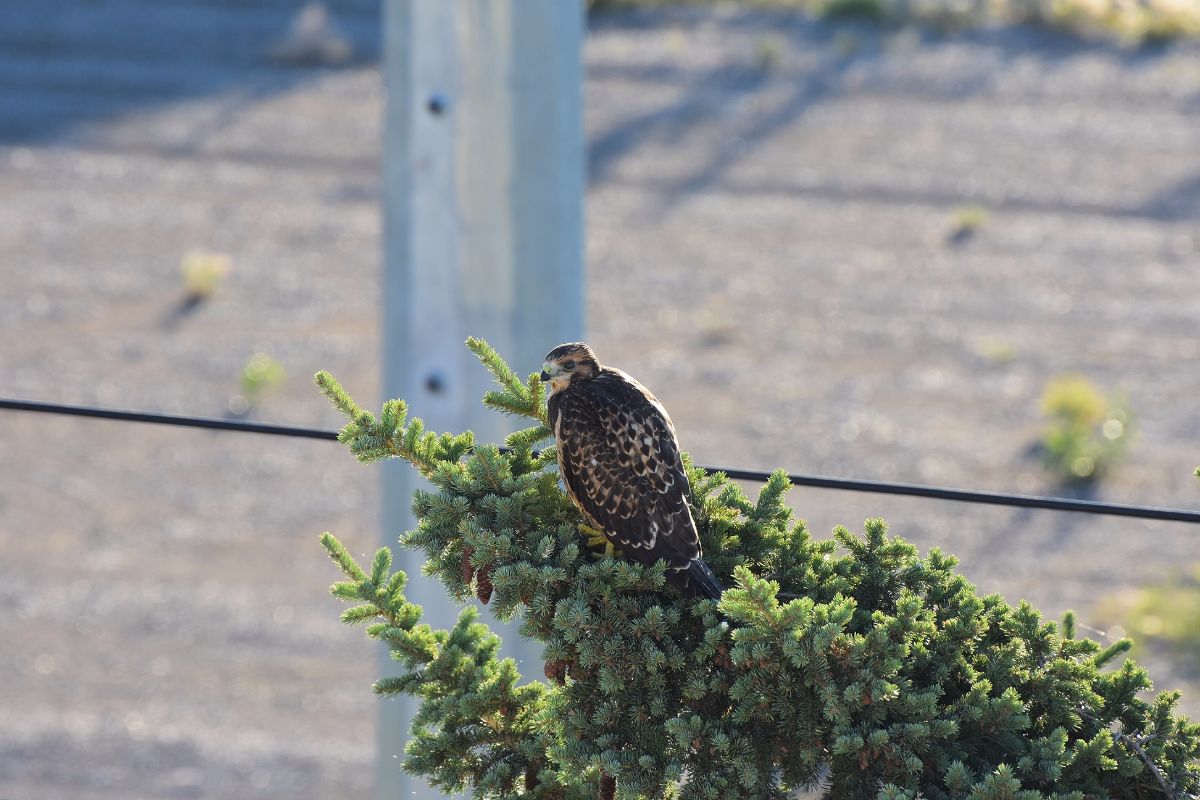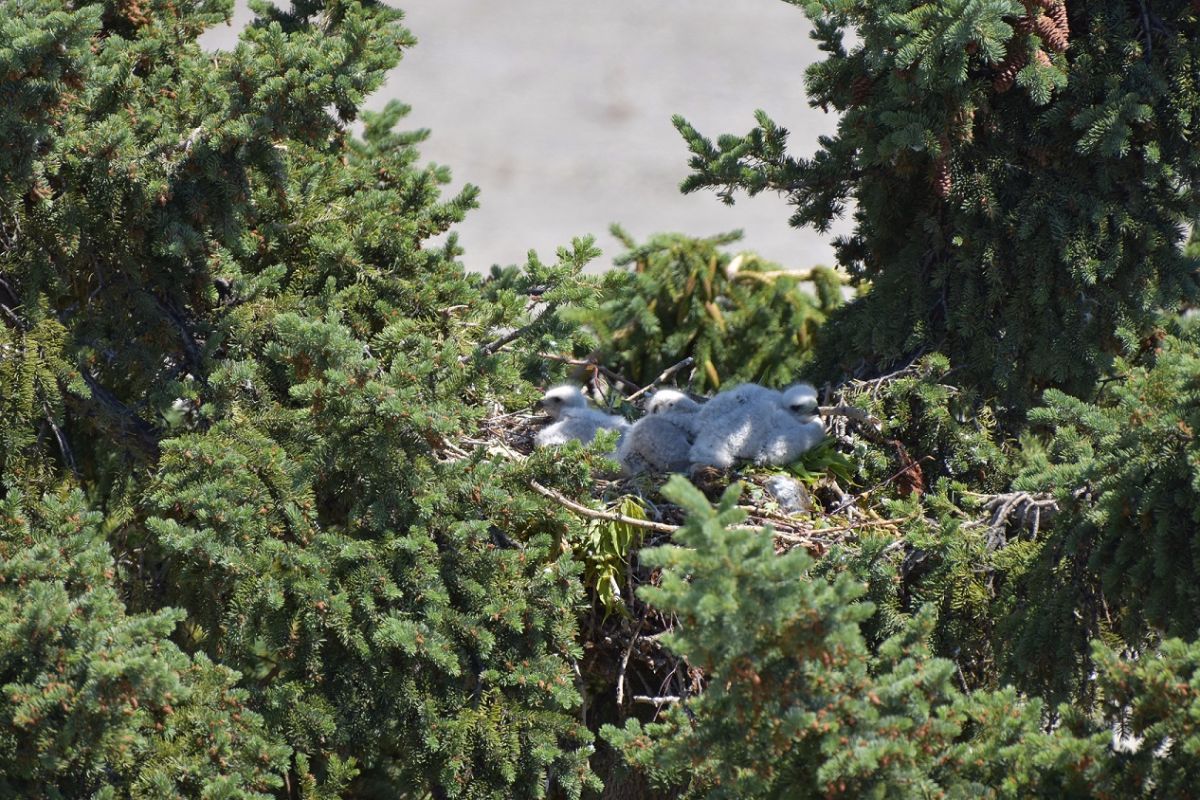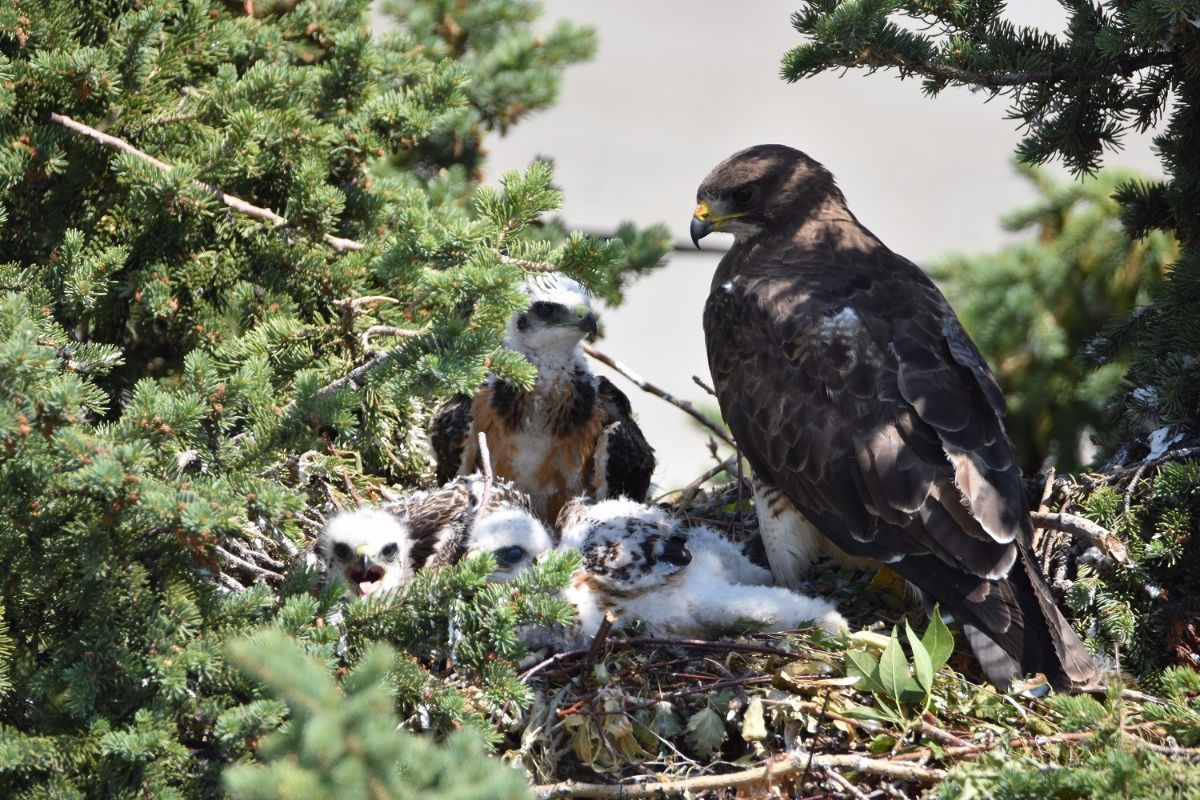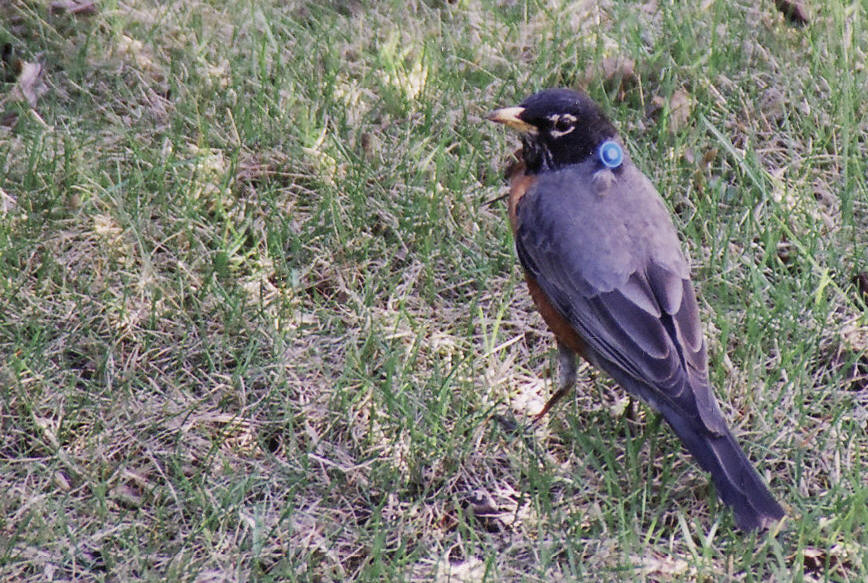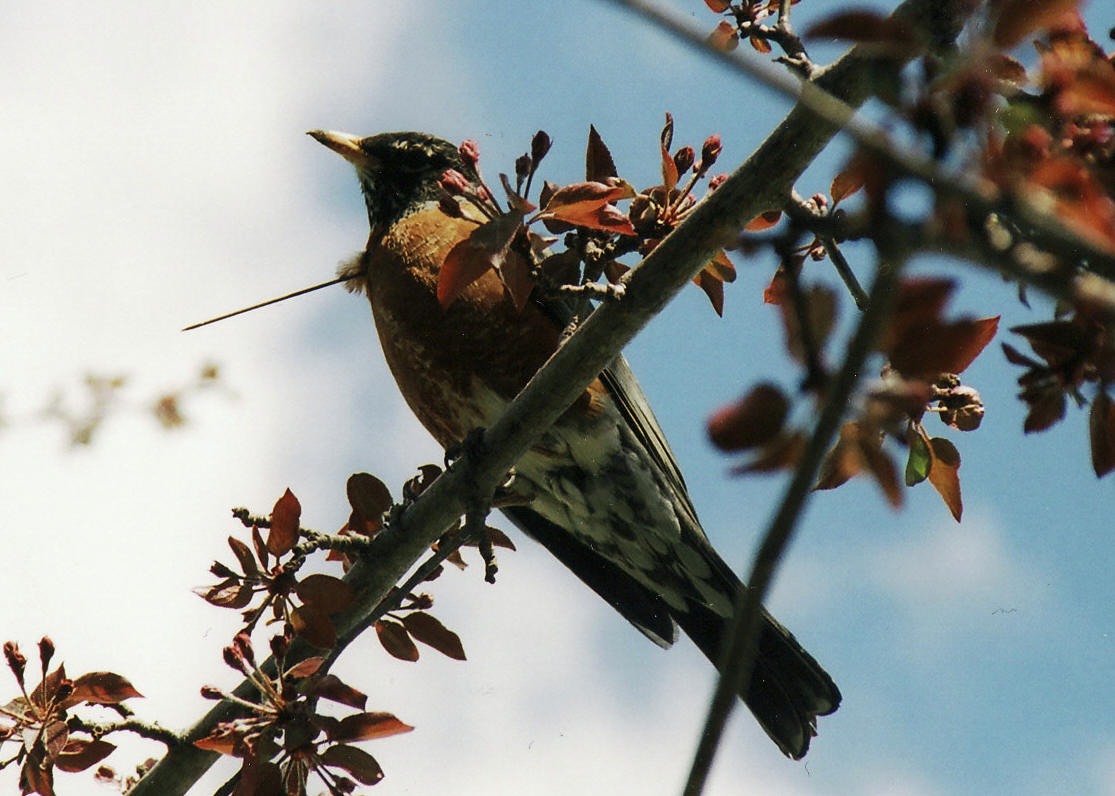Posted by Bob Lefebvre
Brown-headed Cowbirds are obligate nest parasites, so they do not nest or raise their own young – the female cowbird lays her eggs in a number of nests of other species. If the host birds don’t realize that they are incubating a foreign egg, they will feed the cowbird chick until it fledges and for a while afterwards, until it can forage on its own and rejoin its cowbird cousins.
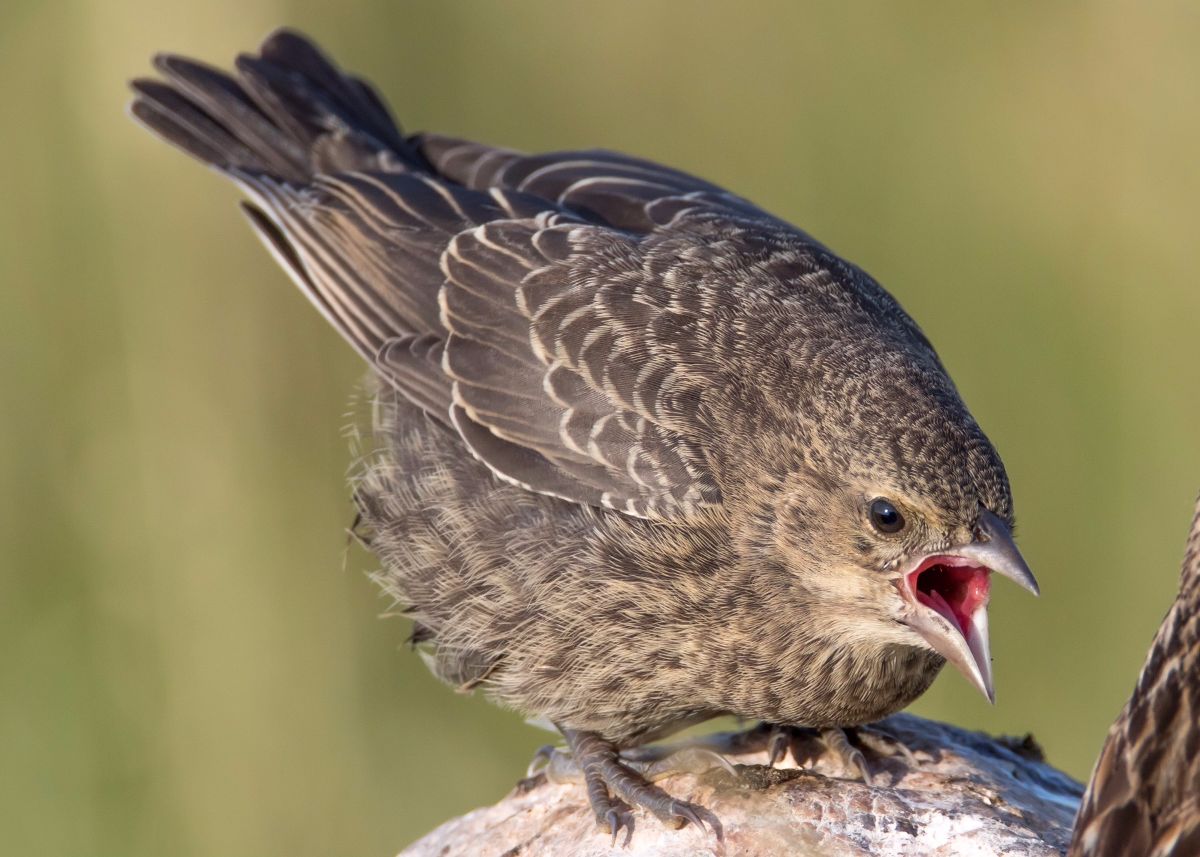
Brown-headed Cowbird chick, just out of the nest and begging for food. (All photos taken by Tony LePrieur, July 1, 2016.)
Many of the songbirds that are parasitized in this way are quite a bit smaller than cowbirds, so it makes for a comical sight when the “parents” are feeding their giant “offspring”. It’s no joke for the host parents, though, as this is a great drain on their food-gathering resources, and it has a negative impact on their ability to raise their own biological young.
Tony LePrieur has recently seen a number of young cowbirds being fed by different hosts in the Calgary area. Thanks to Tony for these fantastic photos!

Song Sparrow (left) feeding a Brown-headed Cowbird chick. Sikome Lake, Fish Creek Provincial Park.

Calling for food from the host Song Sparrow.

Another cowbird being fed by a Western Wood-Pewee, not far from the Song Sparrow and chick at Sikome, Fish Creek Park. This could very well be a biological sibling of the bird being fed by the Song Sparrow.

The Western Wood-Pewee adult, probably a little worn out from trying to provide for the cowbird chick.

Two cowbirds were being fed by a pair of Savannah Sparrows at Frank Lake, also on Canada Day.

A close-up taken from the above photo.

Those of you with teen-aged boys will know how this Savannah Sparrow feels 🙁
Cowbirds also often parasitize Clay-colored Sparrows and even smaller birds like Yellow Warblers and House Wrens, so if you see any of those species carrying food, watch to see if they are feeding cowbirds.
Do you have photos of birds taken in the Calgary area? Send them to us and we may post them on the blog! birdscalgary@gmail.com
























